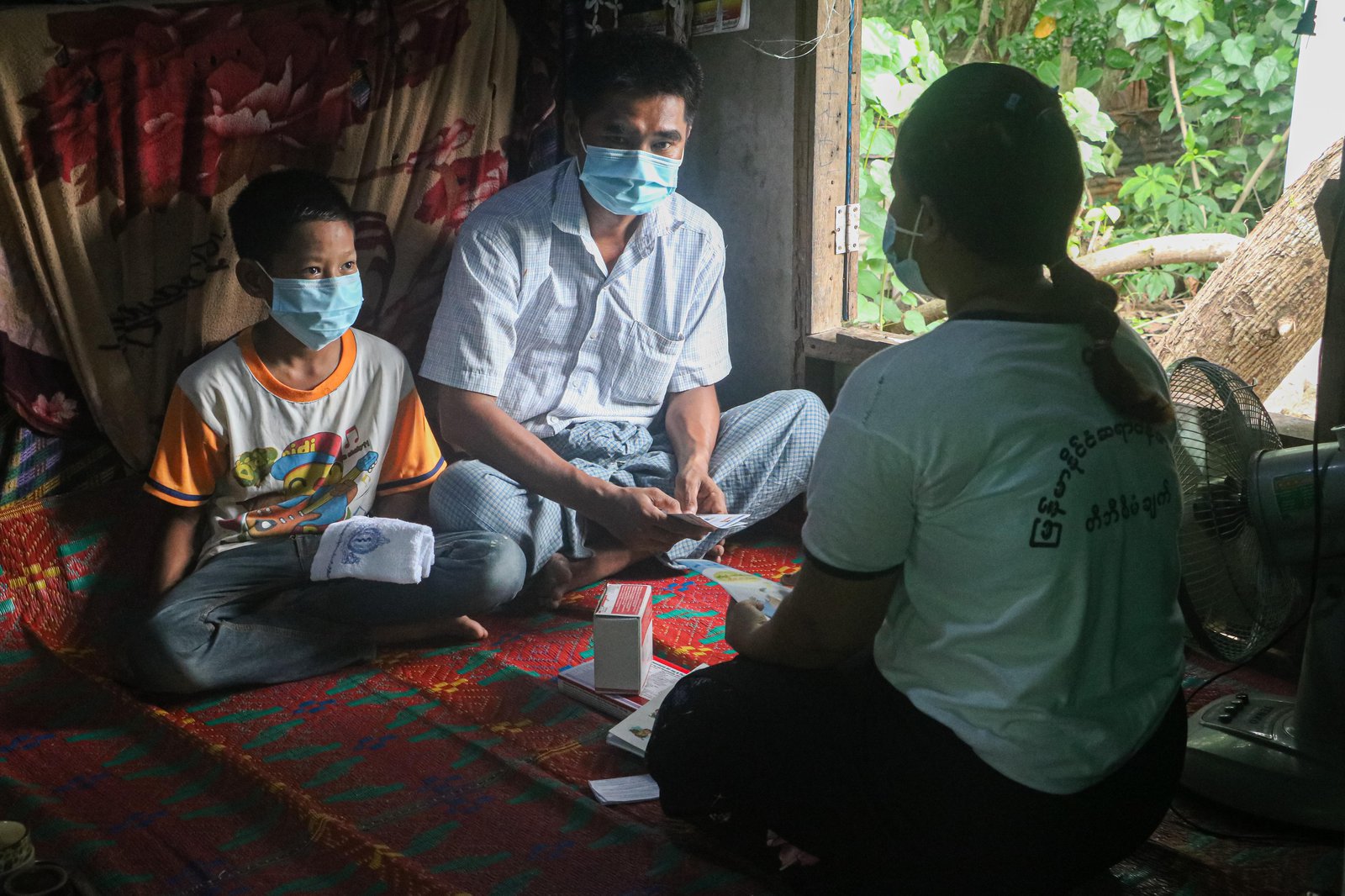Dr. Hmwe Thazin Myint runs a private clinic in Thanlyin, Myanmar, a port city just across the river from the country’s largest city, Yangon. Many of her patients are laborers living in employee housing—close quarters that facilitate the spread of airborne infections like tuberculosis (TB).
To support Hmwe and physicians like her, PATH and the Myanmar Medical Association have partnered on the Stop TB initiative TB REACH Wave 7—which aims to alleviate radiologist shortages, accelerate diagnosis, and improve treatment adherence by combining cutting-edge technology with tried-and-true tactics.
Artificial intelligence, real results
At Hmwe’s clinic—and seven others around Myanmar—chest X-rays are now being screened by qXR, an artifical intelligence (AI) tool much faster than traditional human review.
In August, September, and October of 2020, qXR identified 21 new cases of TB. Of those, 15 were at Hmwe’s clinic.
“The AI can detect abnormalities in minutes, compared with the time-consuming method of manual examination,” Hmwe says. “I’ve already seen the patients benefit. TB diagnosis has become faster, and patients have shown improvement in treatment adherence and outcome.”
Engaging the local community
As TB REACH Wave 7 equips physicians with AI, the initiative also leverages a tried-and-true public health tactic: mobilizing community volunteers.
“In Myanmarese culture, women are traditionally seen as caregivers in their families and communities,” says Dr. Kishori Mahat, PATH’s director of infectious diseases in Myanmar. “Engaging local women’s groups has been crucial to our program’s success. They’ve become active agents, imparting crucial TB knowledge to their communities.”

Community volunteer Ma Thandar Aung (right) conducts household contact tracing and tuberculosis counseling in Yangon, Myanmar. Photo: PATH/Kyaw Thann.
In collaboration with women’s community organizations in the Local Resources Center and Gender Equality Network, TB REACH Wave 7 partners with women volunteers and teaches them essential skills for advancing TB control. These skills include informing patients about TB screening processes, tracing their close contacts, providing referrals for diagnosis and treatment, and supporting follow-up and treatment adherence.
Public-private partnership
TB REACH Wave 7 employs another tried-and-true technique as well: public-private partnership. Specifically, private physicians diagnose and treat patients while also connecting them with the public health system for free confirmatory testing and anti-TB drugs.
Hmwe says this approach makes patients more likely to seek treatment and more likely to complete it. “After nine years working with TB patients in Myanmar, I can tell you patients are more comfortable with their general practitioner, and the familial bond we share helps motivate the patients to complete their treatment.”
This particular public-private approach was originally piloted in Mumbai, India, in 2018 as the Private Provider Interface Agency—an award-winning collaboration between India’s government, PATH, and private physicians—and was also applied in Nagpur, India, in 2019, as part of TB REACH Wave 7’s predecessor, TB REACH Wave 6.
In Wave 6, PATH identified informal health care providers and chest X-ray facilities in the private sector and equipped them with the same AI tool—qXR—now being used to read chest X-rays in Myanmar. As in Thanlyin, private-sector patients with abnormal findings in Nagpur were referred to a public health facility and provided with subsidized, state-of-the art TB diagnosis, free drugs, and treatment adherence support.
Vaishnavi Jondhale, PATH’s lead on TB REACH Wave 6, says, “The project in Nagpur successfully created linkages between private providers and the public sector and demonstrated the potential impact of AI on TB case detection. From 2018 to 2019, the initiative achieved a 20 percent increase in overall TB case notifications.”
Expanding access to care
In both India and Myanmar, AI for chest X-rays is proving a valuable tool for addressing radiologist shortages, accelerating TB diagnosis, and moving countries closer to achieving their TB elimination goals.
But it has one other critical benefit—saving time for physicians and health care providers. When providers have more time, more patients of all kinds gain access to the care they need.
“I know the difficulties families face trying to access treatment,” Hmwe says. “My father died of lung cancer when I was nine years old. That’s why I decided to pursue medicine in the first place.”
When Hmwe began practicing medicine, there were no TB doctors anywhere in her region. Now, she’s an invaluable resource for the people in Thanlyin. And, thanks to initiatives like TB REACH Wave 6 and 7, Hmwe and physicians like her have powerful new tools at their disposal.



